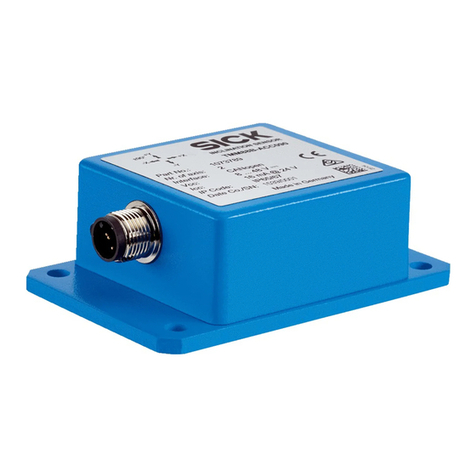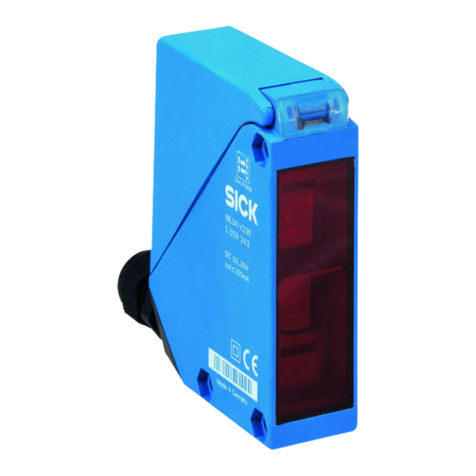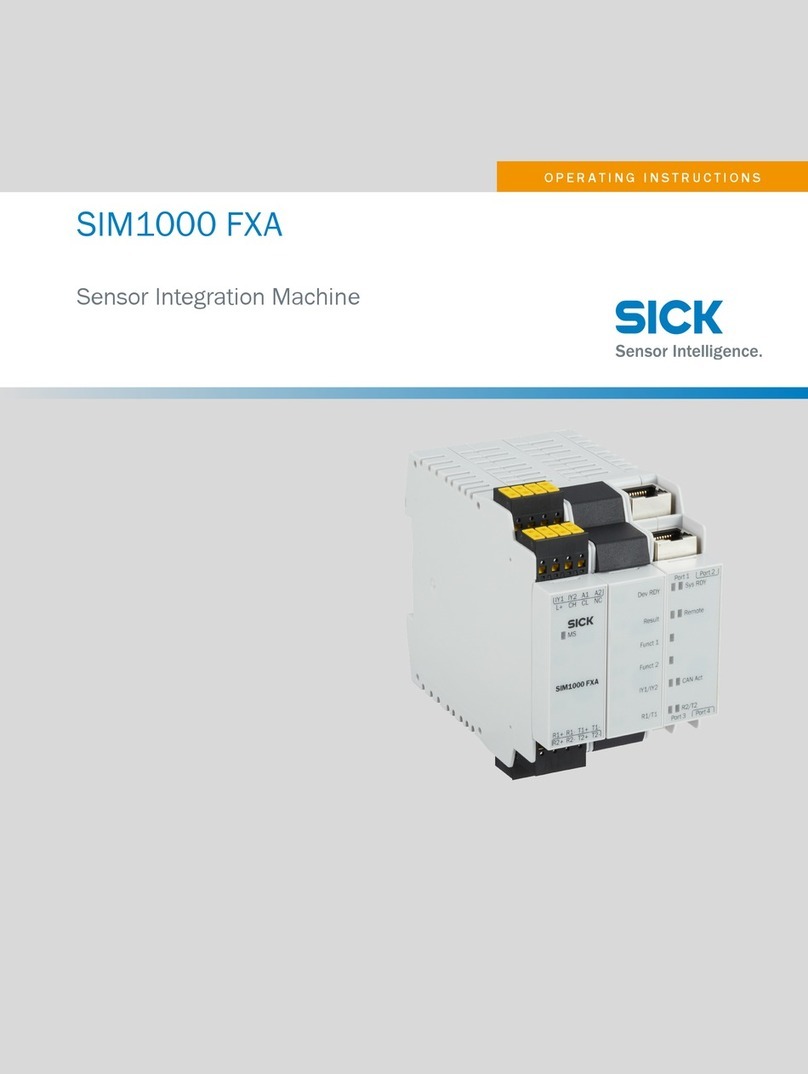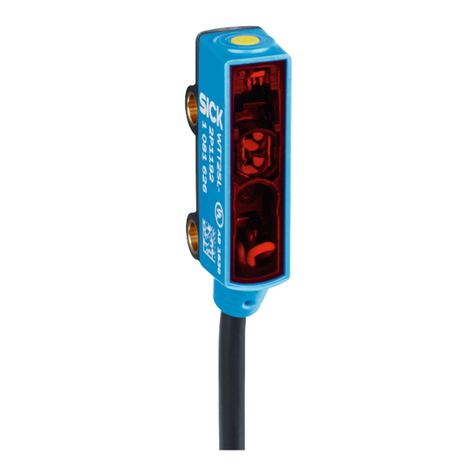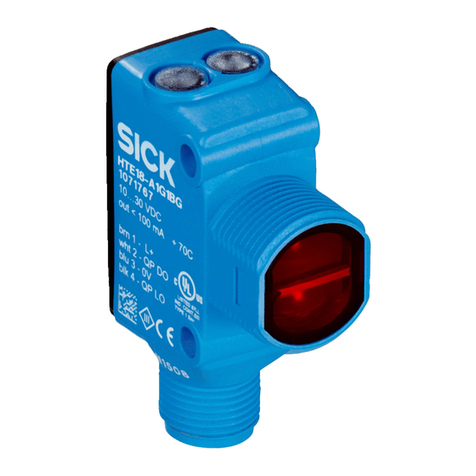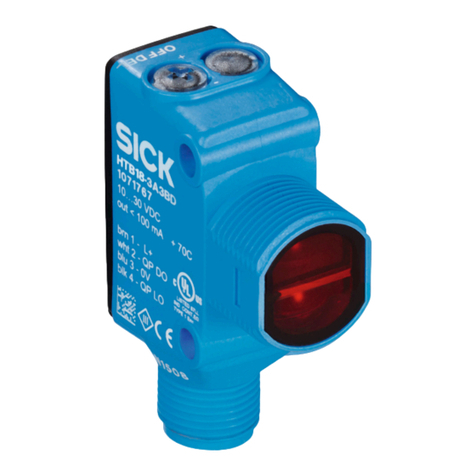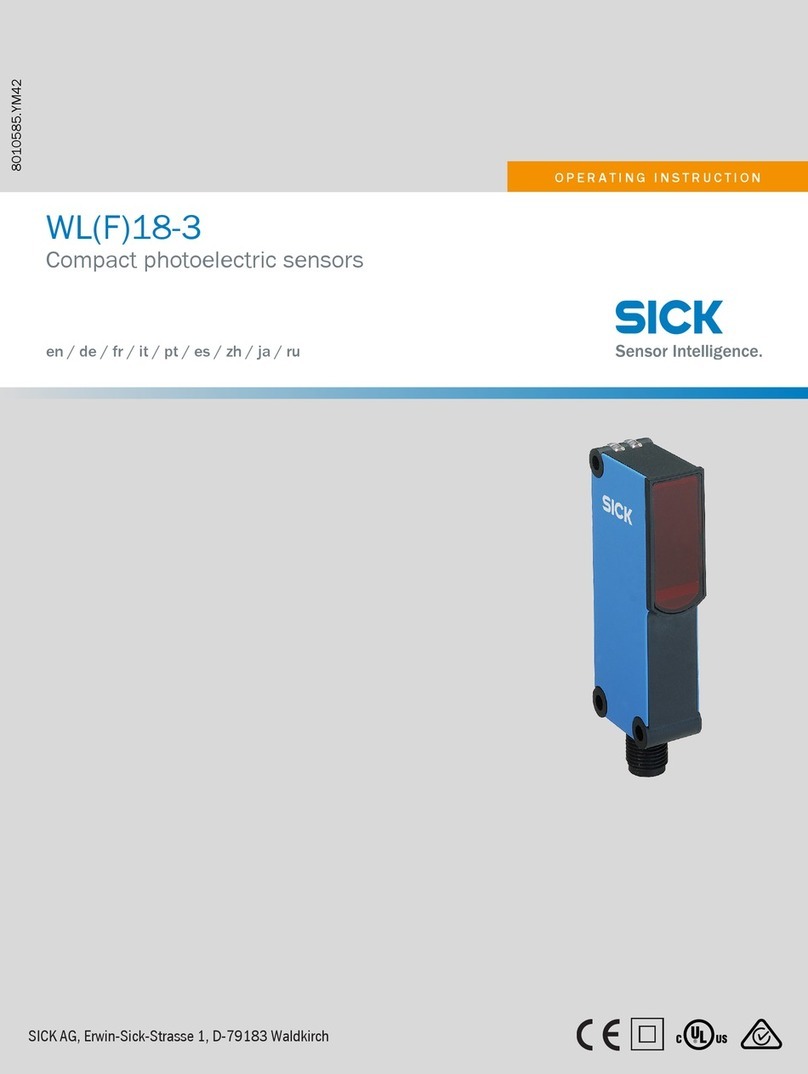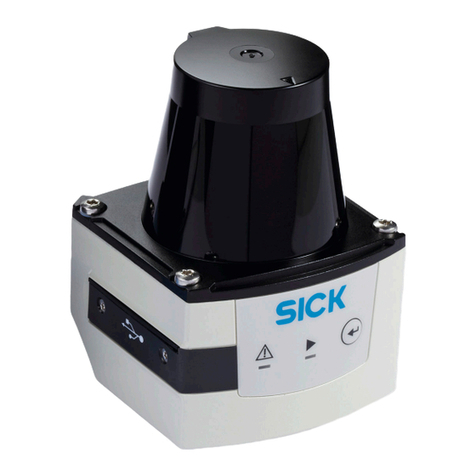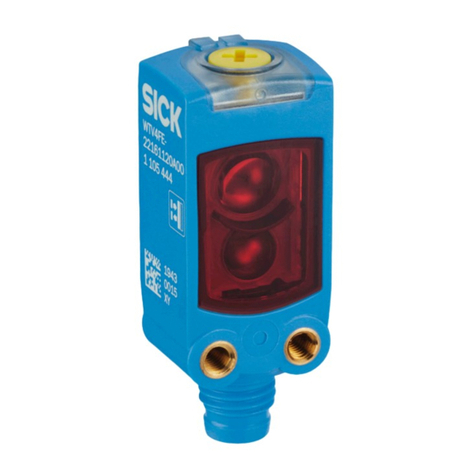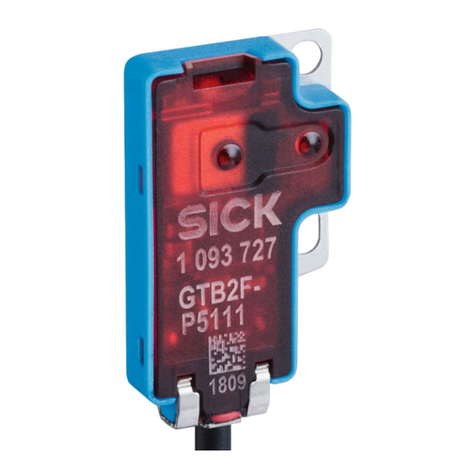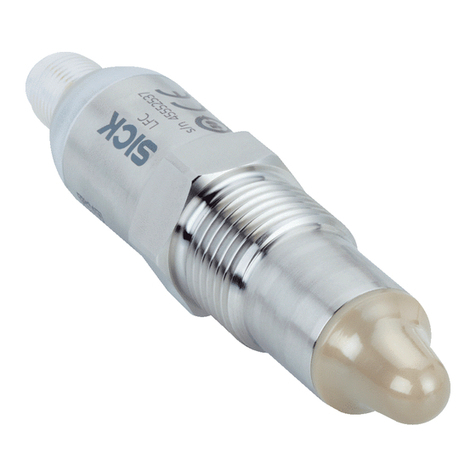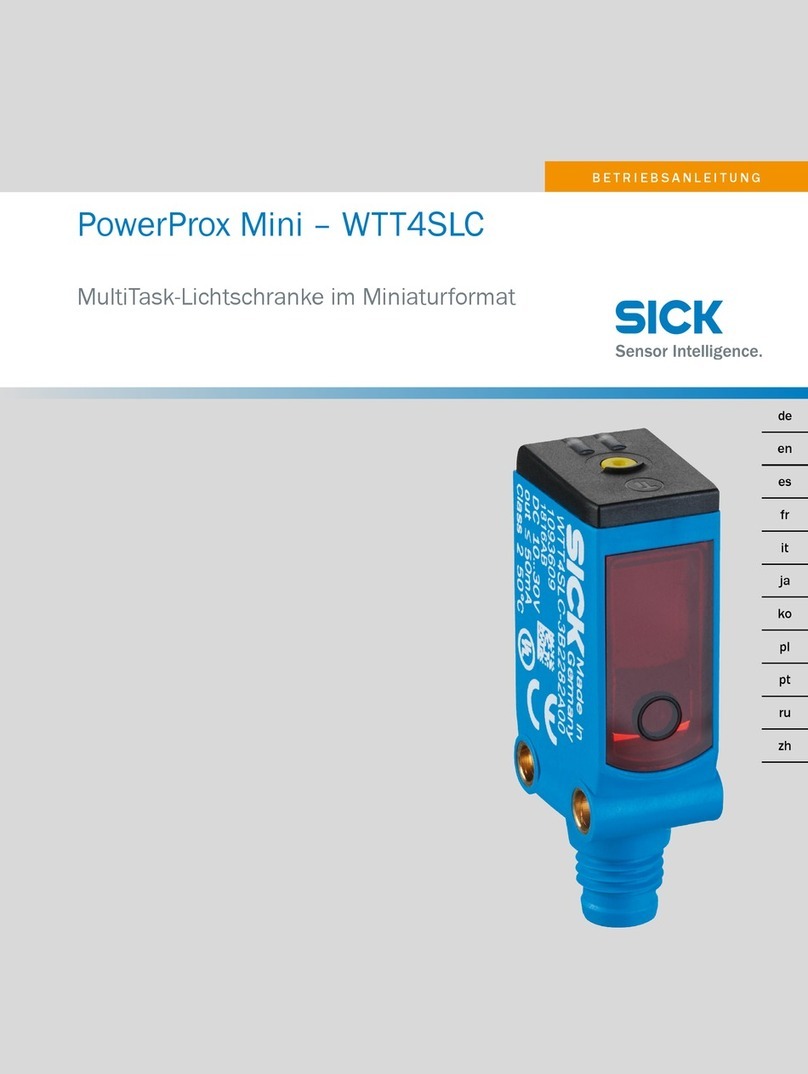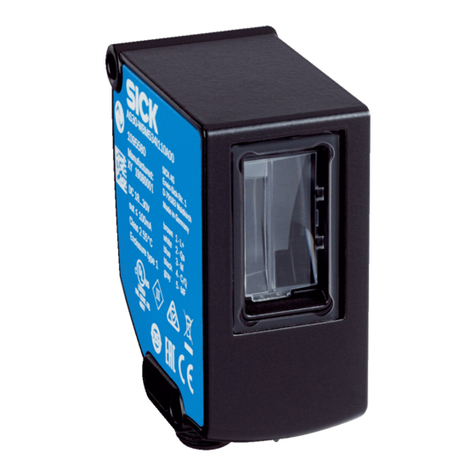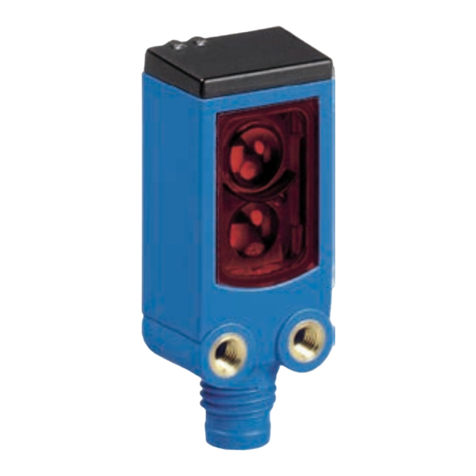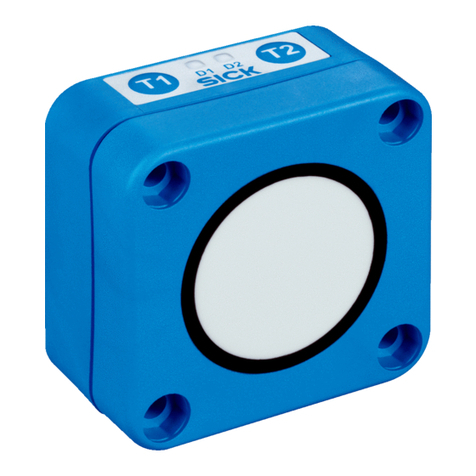
Table 6: Alarm / Health
Alarm (≤ 100 mA) Health (≤100 mA)
Test input
Test input: The sensors (WSO26 P, WSO26 I) feature a test input (“Test” in see table 2
and table 7), which can be used to switch the sender off and, therefore, check that the
sensor is functioning correctly: If female cable connectors with LED indicators are used,
you have to ensure that Test is assigned accordingly.
It is important that there is no object between the sender and receiver, activate the test
input (see the connection diagram [table 7]). The send LED is shut down or the detec‐
tion of an object is simulated. Refer to table 7 to check the function. If the switching
output fails to behave in accordance with table 7, check the application conditions. See
section Troubleshooting.
Table 7: Test
Test → M Test → L+
7 Commissioning
1Alignment
WSO26 P: Align the sender with the receiver. Select the position so that the red emitted
light beam hits the receiver. Tip: Use white paper or a reflector as an alignment aid. The
sender must have a clear view of the receiver, with no object in the path of the beam [see
figure 2]. You must ensure that the optical openings (front screen) of the sensors are com‐
pletely clear.
WSO26 I: Align the sender with the receiver. Select the position so that the infrared light
(not visible) hits the receiver. The correct alignment can only be detected via the LED indi‐
cators,see figure 2, figure 3 and see table 5. The sender must have a clear view of the
receiver, with no object in the path of the beam. You must ensure that the optical openings
(front screen) of the sensors are completely clear.
6 ADDITIONAL FUNCTIONS
88020358.14CS | SICK
Subject to change without notice

